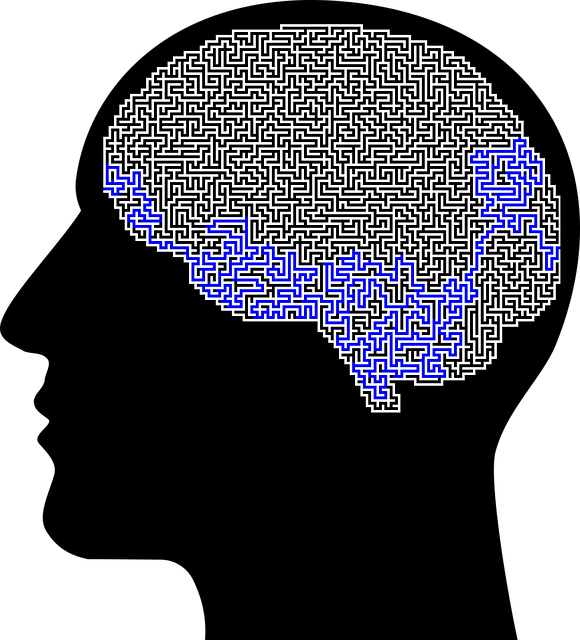Greenwood Village Mandarin Chinese Speaking Therapy prioritizes risk management in mental health services through culturally sensitive approaches. They integrate Mental Wellness Journaling, Trauma Support, Social Skills Training, and wellness coaching to create a safe environment catering to diverse patient needs. Effective boundary setting, therapist self-care, and continuous evaluation ensure a supportive therapeutic space, fostering positive mental health outcomes for Mandarin Chinese-speaking clients.
In the demanding field of mental health, effective risk management planning is paramount. This article explores comprehensive strategies for professionals, focusing on the unique challenges within the cultural context. We delve into understanding risks specific to mental health practice and how tailoring these plans can foster a safe environment.
From practical tools to continuous improvement, learn from Greenwood Village Mandarin Chinese Speaking Therapy’s approach, showcasing a successful model for mitigating risks while catering to diverse cultural needs.
- Understanding Risks in Mental Health Practice
- Tailoring Risk Management Strategies for Cultural Sensitivity
- Practical Tools and Techniques for Safe Therapy
- Continuous Evaluation and Improvement at Greenwood Village Mandarin Chinese Speaking Therapy
Understanding Risks in Mental Health Practice

In the realm of mental health professional services, understanding risks is paramount for effective risk management planning. Greenwood Village Mandarin Chinese Speaking Therapy, like any other therapy setting, faces unique challenges. The nature of mental health work often involves complex client dynamics, sensitive information, and potentially high-risk cases. Therapists must be aware of the potential dangers, such as self-harm, suicide ideation, or sudden behavioral changes, which require immediate attention and appropriate responses.
By integrating Mental Wellness Journaling Exercise Guidance and Trauma Support Services into their risk management strategies, professionals can create a safer environment. Social Skills Training can also enhance clients’ ability to navigate challenging situations, reducing the likelihood of risky behaviors. These proactive measures ensure that therapists are well-equipped to handle diverse client needs while minimizing potential hazards, ultimately fostering a more secure therapeutic space for all involved.
Tailoring Risk Management Strategies for Cultural Sensitivity

In the context of mental health practice, particularly at Greenwood Village Mandarin Chinese Speaking Therapy, tailoring risk management strategies to incorporate cultural sensitivity is paramount. This involves understanding and addressing the unique needs and perspectives of diverse patient populations. For instance, when working with individuals from different ethnic backgrounds, it’s crucial to consider cultural beliefs about mental illness, coping mechanisms, and therapeutic approaches. A one-size-fits-all approach may not be effective; thus, professionals must adapt their strategies to respect and integrate these cultural differences.
The integration of Mental Wellness Coaching Programs Development and Mental Health Education Programs Design can significantly enhance risk management. Educating both patients and therapists on positive thinking techniques, stress management, and cultural competency fosters an environment where individuals feel empowered to take control of their mental health. This approach not only promotes positive outcomes but also ensures that the care provided aligns with the patient’s cultural identity and values, ultimately enhancing therapeutic relationships and effectiveness.
Practical Tools and Techniques for Safe Therapy

Maintaining a safe and supportive therapeutic environment is paramount for mental health professionals. At Greenwood Village Mandarin Chinese Speaking Therapy, we recognize that effective risk management planning involves a blend of practical tools and techniques. One crucial aspect is establishing clear boundaries and communication protocols with clients, ensuring everyone understands the limits of confidentiality and what constitutes appropriate behavior in therapy sessions.
Additionally, integrating self-care practices among therapists is essential for mitigating professional risks. This includes regular mental wellness coaching programs designed to enhance resilience, manage stress, and prevent burnout. Conflict resolution techniques also play a vital role in addressing potential challenges within the therapeutic relationship. By mastering these skills, mental health professionals can navigate difficult situations gracefully, safeguarding both their well-being and that of their clients.
Continuous Evaluation and Improvement at Greenwood Village Mandarin Chinese Speaking Therapy

At Greenwood Village Mandarin Chinese Speaking Therapy, continuous evaluation and improvement are at the heart of our risk management planning. We regularly assess our therapy approaches through client feedback, outcome measurements, and internal quality assurance checks. This comprehensive approach ensures that we remain up-to-date with evidence-based practices, adapt to individual needs, and continually enhance our service delivery.
Our team actively participates in professional development activities, including workshops on mindfulness meditation, confidence boosting communication strategies, and cultural sensitivity training. By integrating these learned skills into our therapy sessions, we not only mitigate potential risks but also foster a supportive environment that promotes positive mental health outcomes. This commitment to ongoing learning and adaptation is what sets Greenwood Village apart, allowing us to offer the best possible care to our Mandarin Chinese-speaking clients.
Mental health professionals, like those at Greenwood Village Mandarin Chinese Speaking Therapy, face unique challenges that demand robust risk management planning. By understanding specific risks within their practice, tailoring strategies for cultural sensitivity, and leveraging practical tools, therapists can create a safe environment for all clients. Continuous evaluation and improvement are essential to ensure the highest level of care, making risk management an ongoing process integral to successful therapy outcomes.













